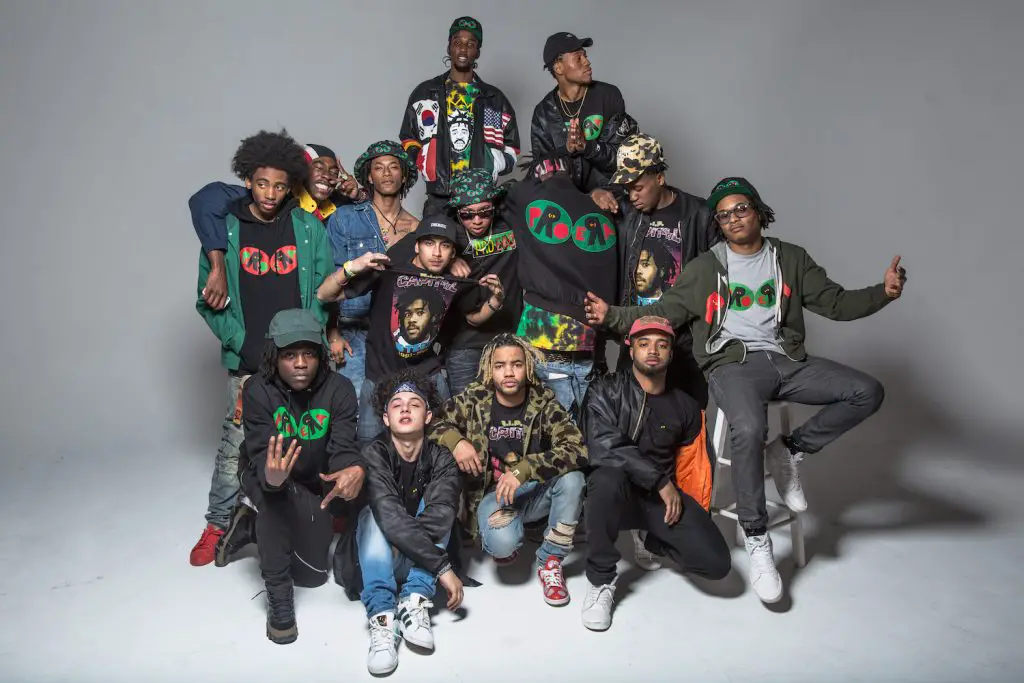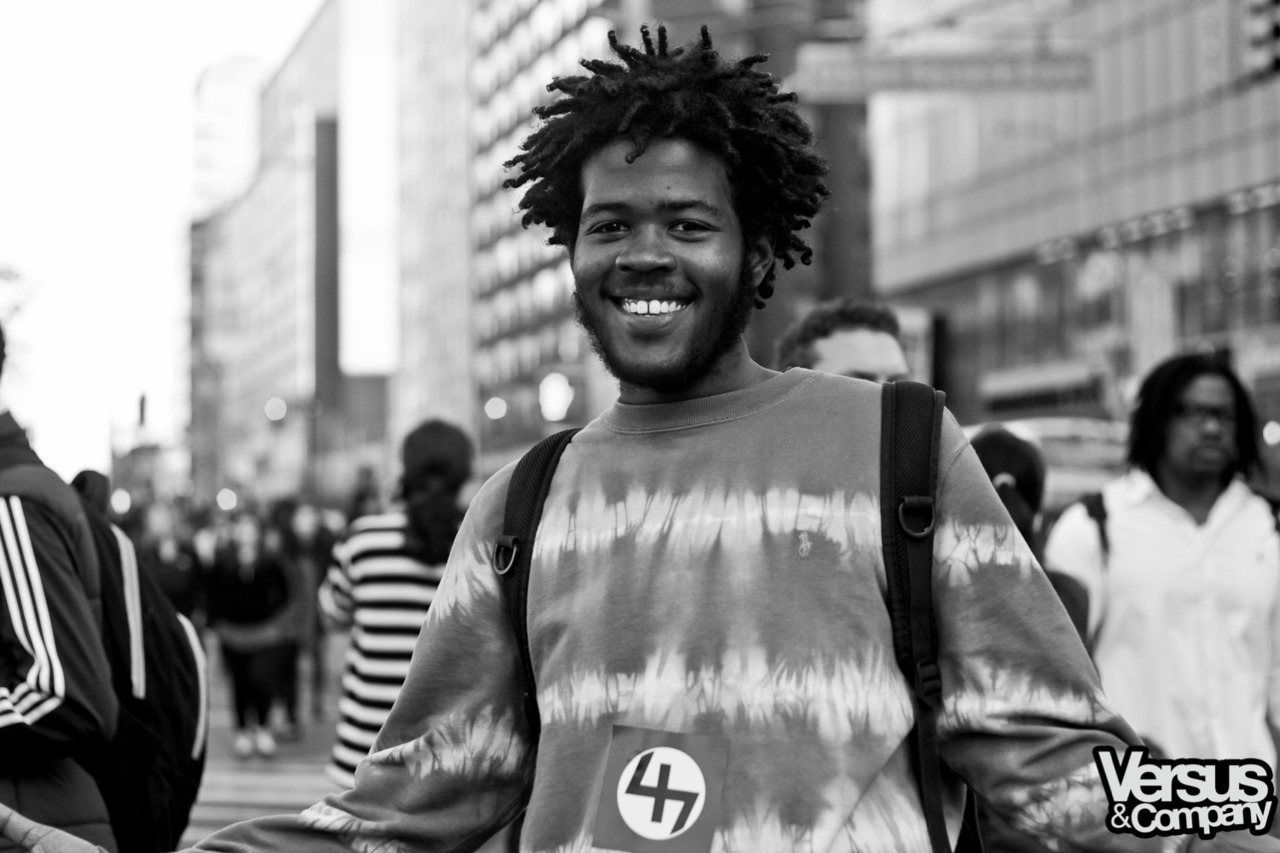In the first minutes of Christmas Eve in 2012, New York rapper Capital STEEZ, real name Courtney Jamal Dewar, committed suicide at age nineteen by jumping off the roof of the Cinematic Music Group’s headquarters. It was a painful moment in music history.
Just last month, Joey Bada$$ announced at the third annual STEEZ Day Festival that they would be releasing a posthumous album of STEEZ’s unpublished work, called “King Capital,” on the five-year anniversary of his death. The festival crowd, of course, erupted into noise and excitement, as the album had been supposedly in the works since STEEZ’s death. How did this artist make such a significant impact on hip hop in such a short time and at such a young age?
Capital STEEZ, formerly known as Jay STEEZ, was the primary founder of the rap clique Pro Era, a New York group of extremely young but talented rappers/producers including Joey Bada$$, Kirk Knight, Nyck Caution and CJ Fly. Short for Progressive Era, the group had two primary goals: to respond to the dominant success of West Coast hip hop by putting New York back on the map, and to introduce a more spiritually focused message to the culture.
According to Joey, they wanted to “change the world through our music.” These must have seemed like ludicrously high-minded ambitions for a band of kids still in high school, but time showed that their dreams were more in their grasp than anyone would have guessed.

The group, especially STEEZ and Joey Bada$$, possessed a sharp-witted sound that was heavily influenced by jazz and early nineties hip-hop. With crazy rhyme schemes, liquid flows and consistently clever wordplay, Pro Era began making a splash in the East Coast rap scene. STEEZ even coined the term “Beast Coast Movement,” which is composed of Pro Era, The Flatbush Zombies and The Underachievers. STEEZ began setting himself apart from most other rappers with bars that seemed far too socially conscious for an eighteen-year-old.
STEEZ’s persona was also different than that of his Pro Era counterparts. He seemed to wield the “outsider” perspective in his verses, attempting to criticize the very foundation of the music industry and American society. His anger was never expressed through violent lyrics, but through a sort of wisdom that remained perpetually bleak but impressively intelligent and always a little bit weird.
STEEZ’s song “Free the Robots” is excellent evidence of this, from the music to the lyrics to his music video. The hook samples the Moody Blues, creating a dreamy, emotionally distant feeling while the rest of the beat thunders in with aggressive drums and haunting riffs from a piano.
His lyrics question American politics and his own community from every level. He highlights the many civilian casualties that led up to the death of Osama Bin Laden; he flambés New York City’s Mayor Bloomberg for putting his energy into regulating sizes for soda while the crack rings were leaving people dead in the streets; he criticizes the black community for their lack of unity, and he wonders anxiously if God perhaps abandoned Earth because of humankind’s destructive ways.
The music video shows him sitting on his couch being numbed senseless by a TV that skips through channels rapidly. He mouths out the song as if in a daze. Even as the song builds and his voice is almost screaming the lyrics, the STEEZ we see in the video warps his mouth to the lyrics emotionlessly, trapped in hypnosis perpetrated by the media. This leads us to talking about STEEZ’s spiritual beliefs.
His mother was a Christian, but in high school STEEZ abandoned these beliefs in favor of Rastafarianism. However, it didn’t take long for STEEZ to start tinkering with a unique set of beliefs that went far beyond being Rastafarian. He claimed to be an “indigo child,” an idea birthed from new age science that claims that certain children are born with inherent intuition, spirituality and a desire to rebel against authority.
He frequently talked about auras, chakras and, most popularly, the “third eye.” This language and ideology began to spread amongst the other members of Pro Era. If you listen to their music, especially their earlier stuff, you will hear many references to people’s third eye, chakras and to similarly spiritual topics.
STEEZ also started the group’s obsession with the number forty-seven. He claimed it was the number of universal balance. The fourth chakra (the heart) and the seventh chakra (the mind) pull at each other perpetually. Forty-seven is also a prime number, and four plus seven equals eleven, indicating the eleventh chakra or “the third eye.”
The crew began to graffiti the number everywhere, stylized so that the number appeared as a symmetrical symbol closely resembling a swastika. In doing this, they both refer back to the symbol’s original use in Eastern cultures as an emblem of spiritual values and good fortune, and intentionally stir up controversy amongst those who see and misinterpret it. This attitude is further expressed by STEEZ’s spelling of his debut mixtape “AMERIKKKAN KORRUPTION.”
Despite being the clear leader of Pro Era from the perspective of the Pros themselves, it was actually Joey Bada$$ who seemed to be gaining the most traction with the outside world. Cinematic Music Group, a promotional music company, got Joey to sign a contract under the name of Pro Era, but it became clear with time that the company was primarily interested in Joey over the others.
They pumped out higher budget music videos for him immediately following the release of his tape “1999.” They changed the credits of Joey and STEEZ’s breakout track, “Survival Tactics,” from “Joey Bada$$ and Capital STEEZ” to “Joey Bada$$ featuring Capital STEEZ.” When they toured together, the group was listed as “Joey Bada$$ and Pro Era.”
STEEZ was watching his brainchild become a shadow that he began to live in. His music was certainly less marketable to the mainstream than Joey’s, and “AMERIKKAN KORRUPTION” was failing to buzz in the way he had hoped. This was around the time that his spiritual beliefs evolved into something stranger and harder to understand.
He claimed to be a being of a higher dimension. He talked about alchemy and Baphomet, a half-man, half-goat idol. He fixated on the apocalypse, and his outlook seemed to have gotten even darker. Even his friends and fellow members of Pro Era, the ones who had so eagerly followed him on his spiritual quests, confessed that they could no longer understand what he meant half the time. He appeared more alone than ever.
STEEZ’s increasingly strange persona not only further limited his potential marketability, but created a flood of rumors after his death that tried to dig at the cause and possible purpose of his passing. This was catalyzed by the fact that not a single newspaper reported on his death, and out of the few websites that did talk about it, there was little information and no express confirmation that it had actually happened at all.
Some claimed he was killed by the Illuminati for trying to preach disestablishment ideology. Some claimed that he did not actually die, but ascended to a higher dimension. Some claimed that he was a schizophrenic whose heavy weed use triggered a psychotic break, using his demise as a cautionary tale of the dangers of drugs. Some claimed that STEEZ hated the other members of Pro Era and used the Cinematic Music Groups’ headquarters as a message to them about the consequences of their selfishness. Some have even gone far enough to claim that a number of the Pros murdered him themselves to use his death as a publicity stunt.
This reaction serves as a lesson on multiple levels. We can see that the refusal of significant media outlets to report a death such as this is not without consequences. We can see the desperation of the public to make sense out of a tragic death by inflicting upon it self-constructed narratives of grandiosity, narratives that range from optimistic to bizarre to absolutely insulting. We can see the willingness of people to forget that artists are human beings with feelings and weaknesses and relationships, beyond making music and doing business. We see the dehumanization of one of the most human forms of expression: music.
It is painfully tragic, but regardless of your thoughts or opinions as to the cause of his death, we can see the effects more clearly. More people listen to STEEZ’s music now than they ever did while he was alive.
The annual STEEZ Day Festival gives all of its earnings to his family. We have been taught the hard way how to value the life and work of a young artist. And in the little music he was able to put out in his days on Earth, STEEZ immortalized his voice for a snapshot in time.
When “King Capital” drops on December 23, I know I personally will download it instantly and reminisce with the others who miss him. It will be nice to hear an old friend again.


















Very well written. Thanks m8